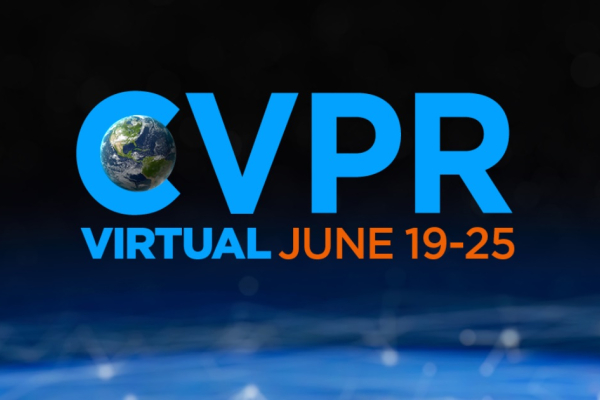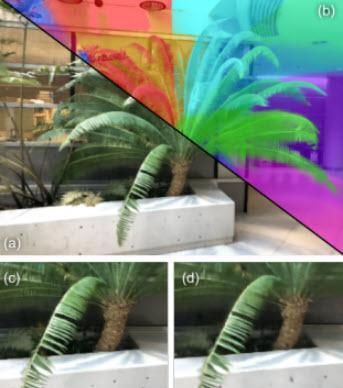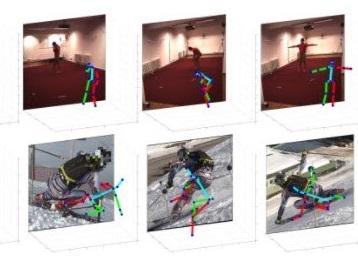
Eight papers accepted from UBC Computer Vision Group by CVPR 2021
Three researchers at UBC from the Computer Vision Lab (CVL) are seeing the fruits of their labour. That’s because an impressive eight papers have been accepted from the trio at the 2021 Conference on Computer Vision and Pattern Recognition (CVPR).
Taking place virtually from June 19 – 25, the conference is the most prestigious annual computer vision event. This year, they had 7,015 submissions in total, of which they’ve accepted 1,664. To have eight papers accepted from one university group (and from just three faculty members) speaks to the great work coming out of CVL. Dr. Leonid Sigal, who had three papers accepted said, “This is a record number, at least in my tenure in the department. CVPR is the highest ranked conference in all of Engineering and Computer Science, so I definitely think it’s an achievement worth celebrating.”
The other UBC computer science researchers are Dr. Helge Rhodin (two papers accepted), and Dr. Kwang Moo Yi (three papers accepted). Kwang Moo is new to the department this year and all three are members of UBC’s Centre for Artificial Intelligence Decision-making and Action
Using geometry, computer vision and graphics to aid 3D rendering
Dr. Yi explained his work, “My team focuses on solving problems related to geometry in computer vision and graphics. We focus on understanding the surrounding environment around images taken by a camera. Applications include things like how map apps are now showing 3D street views, and the ‘measure’ app in your iphone. To make these applications better, questions remain like how do you effectively collect data? How do you represent or render your scene in 3D? Just to name a few.”
Kwang Moo continued, “Having three papers published at once is a record for me. I’m happy for both myself and my students for this accomplishment. It’s a great honour also, to have been able to contribute so soon after joining the department. I must also acknowledge the incredible amount of support I received from our departmental IT team and UBC’s Advanced Research Computing (ARC). We were initially worried about the compute, but the ARC team made it possible.”
Simplifying motion capture and 3D vision
Dr. Helge Rhodin’s work is centred around motion capture and 3D Vision, but specifically using 2D images and constructing a 3D scene. “Because human motion is so dynamic, it’s not easy to capture,” Helge said. “So my work uses a single video and there’s no need for body markers or to calibrate. It’s exciting because we have another group in the department that does motion capture in their lab, run by Dr. Dinesh Pai. He and I are starting to collaborate so that he will probably be able use our techniques to facilitate his work in a year or two.”
Helping Image Search and Driverless Cars
Leonid’s research is about visual understanding of images and videos, like finding objects or identifying the extent of those objects in terms of individual pixels belonging to them. “It’s not just about having a computer identify that there is a chair and there is a table here,” said Leonid. “But more like the chair is next to the table, the chair stands on the floor, and the floor is not porous so the chair won't fall through. It’s about creating a holistic view to understand information from visual input, and doing so without relying on exorbitant amounts of human-curated data.”
His research can facilitate things like Google Image Search, allowing a search to be extremely specific, like perhaps you need an image of a red Ferrari parked next to a building on a muddy street. Leonid explains how the research can also aid driverless cars. “The vehicles need to analyze where objects are. Is that a person on the sidewalk? On the road? Are they walking? Are they about to cross the street? Understanding the intentions of people is key for safety,” he said.
So why is the CVL group proving to be so successful?
Leonid shared his thoughts: “Computer Vision and Graphics are re-emerging for CS because the department made an investment in hiring all three of us fairly recently. Also, we have a high number of grad students, and we all meet regularly, so the topics we cover are very diverse and it brings new insights. Our students are from all around the world, so multiculturalism helps in how one views and solves research problems through different perspectives.”
“I like to work in a bigger group, so it’s a very nice dynamic for me,” said Helge. “I think part of the reason we attract great numbers of students to our group is because we have affiliations with deep learning research associations like Vector Institute.”
All three agree too, that it is the collegial nature of the department as a whole. “Our students talk to us, yes, but they also talk to one another and come up with great ideas,” said Helge.
The Canadian way
Leonid expands on their success, “US research groups in our field are often funded by projects with strong deliverables. So the researchers and students orient toward delivering products for industry or agencies. Whereas we do fundamental research funded by sources that allow a lot of freedom. We don’t get bogged down by tangential deliverables. We strive to set up relationships with industry. Then they can take our research and run with it, as they are much better equipped than we are in academia to create products. For us, that’s the right partnership: it benefits everyone.”
The papers accepted by each faculty member for CVPR 2021:
Dr. Yi’s papers:
VaB-AL: Incorporating Class Imbalance and Difficulty with Variational Bayes for Active Learning
A collaboration with Samsung and researchers in South Korea, UK, and Canada
DeRF Decomposed Radiance Fields
A collaboration with Google and students Daniel Rebain and Wei Jiang
MIST: Multiple Instance Spatial Transformer
Work started at UVic, now completed at UBC in conjunction with Google and student Yuhe Jin
Dr. Rhodin’s Papers:
PCLs: Geometry-aware Neural Reconstruction of 3D Pose with Perspective Crop Layers
In collaboration with École polytechnique fédérale de Lausanne (EPFL) and student Frank Yu
CanonPose: Self-Supervised Monocular 3D Human Pose Estimation in the Wild
In collaboration with the University of Hannover and student Bastian Wandt
Dr. Sigal’s Papers:
Saliency-Guided Image Translation
In collaboration with visiting student Lai Jiang from Beihang University
Energy-Based Learning for Scene Graph Generation
Funded and in collaboration with Amazon Go team, Vector Institute and UBC PhD student Mohammed Suhail
UniT: Unified Knowledge Transfer for Any-shot Object Detection and Segmentation
In conjunction with Vector Institute for AI and PhD students at UBC, Siddhesh Khandelwal and Raghav Goyal